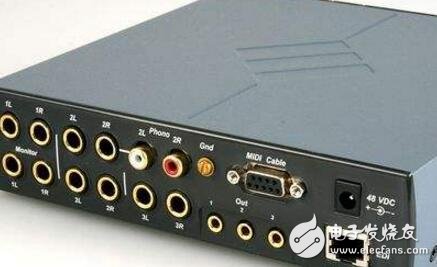Digital audio is a technology that uses digital methods to record, store, edit, compress, or play sound. It represents a new form of audio developed alongside advancements in digital signal processing, computer technology, and multimedia systems. Its primary applications are in music production and post-production processes.
Computer data is stored using binary digits—0s and 1s. Digital audio works by first converting analog sound waves into digital signals, which are then transformed into binary data for storage. When played back, this data is converted back into an analog signal, which is sent to a speaker for output. Unlike traditional audio formats like tapes, radio, or TV, digital audio offers several advantages, including easier storage, lower costs, no distortion during transmission, and more flexible editing options.

**Digital Audio Interfaces:**
Common digital audio interfaces include I2S, PCM, and SPDIF. Here's a brief overview:
- **I2S Interface:**
This interface supports mono or stereo audio and uses the PCM format. It has three main data formats: left-justified, right-aligned, and standard I2S. I2S provides better timing performance than SPDIF and is ideal for short-distance communication.
- **PCM Interface:**
Also known as the DSP mode interface, it is typically used for mono or stereo audio but can theoretically support multi-channel audio as well. The data format is also PCM.
- **SPDIF Interface:**
Short for Sony/Philips Digital Interface, SPDIF uses either coaxial cables or optical fibers for transmission. Optical connections offer better noise resistance. SPDIF can transmit both PCM audio and compressed surround sound formats like Dolby Digital and DTS. These compressed formats are derived from the original PCM stream.
**Digital Audio Applications:**
Although not as widespread as other technologies, digital audio has its own specialized fields, especially in music recording and post-production. Digital audio converts sound files into binary data for storage, and when played, it converts the data back into an analog signal for playback. This process results in a much clearer and more accurate sound compared to traditional media like radio, speakers, or television.
The advantages of digital audio include easy storage, low cost, and high fidelity during transmission and editing. Files remain undamaged during transfer, making it a reliable choice for professionals and enthusiasts alike.

To better understand digital audio, it’s important to know some key concepts: sampling rate, compression ratio, bit rate, and quantization. The higher the sampling rate, the better the audio quality. Compression ratio refers to the size reduction of the file, while bit rate indicates how much data is processed per second. Quantization describes how digital audio data is represented. These elements collectively define the quality and efficiency of digital audio.
If you're interested in learning more about digital audio, there's a wealth of information available online. Understanding these basics can help you make informed decisions when working with digital sound.

Office Power,Office Atx Power Supply,Office Mute Atx Power,Office Mute Power
Boluo Xurong Electronics Co., Ltd. , https://www.greenleaf-pc.com